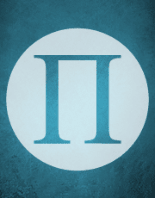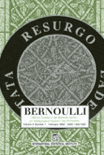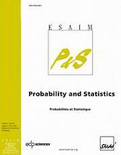
Random Matrices-Theory and Applications
Scope & Guideline
Pioneering Research in Random Matrices and Beyond
Introduction
Aims and Scopes
- Theoretical Developments in Random Matrix Theory:
The journal publishes research that delves into the mathematical foundations and theoretical aspects of random matrices, including eigenvalue distributions, spectral theory, and asymptotic behavior. - Applications in Statistics and Data Science:
Research involving the application of random matrix theory in statistics, particularly in the analysis of high-dimensional data, covariance matrices, and statistical inference. - Connections to Quantum Mechanics and Physics:
Papers that explore the links between random matrix theory and physics, especially in quantum mechanics and statistical mechanics, reflecting the theory's relevance in understanding complex systems. - Free Probability and Noncommutative Geometry:
The journal includes works pertaining to free probability theory and noncommutative geometry, which are essential in understanding the behavior of large random matrices. - Interdisciplinary Applications:
Research that applies random matrix theory to various fields such as finance, telecommunications, and machine learning, illustrating its versatility and real-world relevance.
Trending and Emerging
- High-Dimensional Statistics:
There is a growing emphasis on high-dimensional statistical problems, particularly in the context of machine learning and data analysis, where random matrices are used to understand the behavior of large datasets. - Non-Hermitian and Complex Matrix Models:
Research on non-Hermitian matrices and complex matrix models is increasingly prominent, reflecting the need to understand systems that do not conform to traditional assumptions of symmetry. - Applications in Machine Learning and Neural Networks:
The intersection of random matrix theory with machine learning, particularly in understanding deep neural networks and their properties, is emerging as a vital area of research. - Free Probability and Quantum Information:
The application of free probability in quantum information theory is gaining attention, highlighting the relevance of random matrices in understanding quantum systems and entanglement. - Dynamic and Time-Varying Models:
There is an increase in studies focusing on dynamic and time-varying models, particularly in the context of stochastic processes and their applications in finance and signal processing.
Declining or Waning
- Classical Random Matrix Ensembles:
While foundational results on classical ensembles like Gaussian and Wishart matrices remain important, there is a noted decline in new contributions focusing solely on these classical models as researchers explore more complex and generalized frameworks. - Basic Statistical Applications:
The focus on straightforward statistical applications of random matrices, such as basic hypothesis testing and estimation techniques, has waned as the field moves toward more complex, high-dimensional problems. - Simplistic Eigenvalue Analysis:
Research dedicated to simplistic eigenvalue analysis without considering the interplay of more complex structures (e.g., tensor products or non-Hermitian cases) is less frequently observed in recent publications.
Similar Journals

Forum of Mathematics Pi
Cultivating Knowledge in Diverse Mathematical FieldsForum of Mathematics Pi, published by Cambridge University Press, stands at the forefront of mathematical research, providing an open-access platform since 2013. With an ISSN of 2050-5086, this journal has rapidly established itself within the mathematical community, particularly noted for its high impact in the realms of Algebra and Number Theory, Analysis, Discrete Mathematics and Combinatorics, Geometry and Topology, Mathematical Physics, and Statistics and Probability, as evidenced by its 2023 Q1 rankings across these categories. Its placement within the top quartile signifies its importance and influence, attracting submissions from leading researchers and academicians around the globe. The journal’s diverse scope and rigorous peer-review process ensure a high standard of scholarly excellence, making it an indispensable resource for professionals, students, and researchers eager to stay informed about cutting-edge mathematical advancements. Access to its comprehensive array of articles is openly available, promoting a culture of collaboration and knowledge sharing in the mathematics community.

RANDOM STRUCTURES & ALGORITHMS
Transforming Insights into Algorithms for TomorrowRANDOM STRUCTURES & ALGORITHMS is a prestigious journal published by Wiley that stands at the forefront of research in the realms of applied mathematics, computer graphics, and algorithms. With a notable Impact Factor, it has consistently maintained a Q1 ranking across several categories including Applied Mathematics and Software, showcasing its significant contribution to these fields. The journal, which has been in circulation since 1990, serves as a vital resource for researchers, professionals, and students keen on exploring the complex interplay between randomness and computational efficiency. Although it operates under a traditional access model, the quality and relevance of the content ensure it attracts a broad readership eager to engage with cutting-edge studies and innovative solutions. For those looking to stay at the cutting edge of developments in random structures and algorithms, RANDOM STRUCTURES & ALGORITHMS is an essential journal that continues to shape the landscape of contemporary research.

BERNOULLI
Innovating the Landscape of Probability ResearchBERNOULLI is a prestigious peer-reviewed journal dedicated to the field of Statistics and Probability, published by the renowned International Statistical Institute. Since its inception in 1995, this journal has established itself as a vital resource for researchers and professionals, achieving a remarkable impact factor and consistently ranking in the top quartile (Q1) of its category as of 2023. With a strong presence in the Scopus database, where it ranks #64 among 278 journals in Mathematics, it places in the 76th percentile, underscoring its significance in the academic landscape. Although not an open-access journal, its contributions are pivotal for advancing statistical theory and its applications across various disciplines. As Berounlli continues to evolve until 2024, it remains committed to disseminating high-quality research that fosters innovation and supports the global analytics community. The journal’s scope encompasses a wide range of topics in statistics, including but not limited to theoretical statistics, applied statistics, and data analysis, making it an essential read for anyone engaged in statistical research.

LINEAR ALGEBRA AND ITS APPLICATIONS
Connecting Mathematical Theory with Real-World ApplicationsLINEAR ALGEBRA AND ITS APPLICATIONS, published by Elsevier Science Inc, is a prestigious journal that serves as a vital resource in the field of mathematics, specifically focusing on the areas of linear algebra and its myriad applications across various disciplines. Since its inception in 1968, this journal has established a solid reputation, achieving an impressive impact factor that places it in the Q1 category for Algebra and Number Theory as well as for Discrete Mathematics and Combinatorics in 2023, showcasing its significant contribution to these fields. The journal's rigorous peer-review process ensures that published works reflect the highest standards of scholarly research, further establishing it as a leading publication for mathematicians and researchers alike. Although it does not currently offer Open Access options, its wide-reaching audience can access invaluable findings and innovations within its pages. With a commitment to advancing knowledge and fostering innovation, LINEAR ALGEBRA AND ITS APPLICATIONS continues to be an essential platform for disseminating impactful research that shapes the future of mathematics.

Theory of Probability and Mathematical Statistics
Connecting Theory and Practice in Statistical ScienceTheory of Probability and Mathematical Statistics, published by the Tarás Shevchenko National University of Kyiv, Faculty of Mechanics and Mathematics, serves as a vital resource for academics and practitioners in the field of statistics and probability. With an ISSN of 0094-9000 and E-ISSN 1547-7363, this journal aims to advance theoretical insights and practical applications related to probability theory and statistical methods. Operating from the heart of Ukraine, this journal has been influential since its inception in 2004 and continues to contribute to the academic community as it converges through a significant period until 2024. Despite currently not offering Open Access options, it maintains a respectable Q3 classification in both Statistics and Probability, highlighting its stability within the scholarly landscape. The journal's Scopus rankings further emphasize its specialization, ranking #121 in Statistics, Probability, and Uncertainty, and #203 in Mathematics, underscoring its importance for researchers, students, and professionals seeking to enrich their understanding and foster innovation in these disciplines.

CANADIAN JOURNAL OF STATISTICS-REVUE CANADIENNE DE STATISTIQUE
Navigating the Future of Statistical MethodologiesCanadian Journal of Statistics - Revue Canadienne de Statistique is a prestigious publication in the field of statistics, managed by Wiley. Since its inception in 1973, this journal has served as an essential resource for researchers, practitioners, and students, offering insights into a diverse range of statistical methodologies and applications. With its impact reflected in its 2023 categorization as Q2 in Statistics and Probability and Q3 in Statistics, Probability and Uncertainty, the journal stands out among its peers, exemplifying rigorous standards in empirical research. The journal's ISSN is 0319-5724 and its E-ISSN is 1708-945X, providing a robust platform for the dissemination of knowledge in the field. While it does not offer open access, the journal remains highly regarded and well-cited, contributing significantly to the advancement of statistical theory and practice. As it continues to publish cutting-edge research through to 2024, the Canadian Journal of Statistics is a must-read for anyone seeking to stay informed on the latest trends and developments in statistics.

ESAIM-Probability and Statistics
Empowering researchers with analytical breakthroughs.ESAIM-Probability and Statistics, published by EDP Sciences S A, is a prominent journal focused on advancing the field of probability and statistics. With an ISSN of 1292-8100 and E-ISSN 1262-3318, this journal has been a beacon of scholarly communication since its inception in 1997. Operating out of France, it offers a platform for researchers and professionals to share significant findings and foster collaboration within the statistical community. Designated as Q3 in the Statistics and Probability category for 2023, it plays a vital role in the dissemination of critical research, despite its recent Scopus ranking of 226 out of 278 indicative of its growing visibility and impact. Researchers, students, and professionals alike benefit from its rich pool of analytical insights and innovative methodologies, marking it as an essential resource for those immersed in statistical theory and applications. With a commitment to excellence in research, ESAIM-Probability and Statistics continues to contribute to the instructional and professional development of its readership.

COMMUNICATIONS IN MATHEMATICAL PHYSICS
Pioneering Insights in Statistical and Nonlinear PhysicsCOMMUNICATIONS IN MATHEMATICAL PHYSICS is a premier journal in the realm of mathematical physics, published by Springer and recognized for its rigorous scholarship and comprehensive coverage of the field since its inception in 1965. With an impressive impact factor reflecting its influential contributions—ranking Q1 in both Mathematical Physics and Statistical and Nonlinear Physics—the journal consistently attracts high-quality submissions. It holds notable standings in Scopus, ranked 11th in Mathematical Physics and 12th in Statistical and Nonlinear Physics, marking it as a critical venue for both emerging and established researchers. The journal is dedicated to the dissemination of groundbreaking research and reviews, thereby fostering dialogue and innovation in a constantly evolving discipline. It provides invaluable access to cutting-edge theoretical advancements, making it an essential resource for professionals and students alike engaged in this dynamic field of study.

ANNALS OF PROBABILITY
Exploring the Depths of Probability TheoryANNALS OF PROBABILITY, published by the Institute of Mathematical Statistics (IMS), is a premier academic journal dedicated to the field of probability theory and its applications. With an impressive impact factor and ranked within the top quartile (Q1) in both Statistics and Probability and Statistics, Probability and Uncertainty categories as of 2023, this journal serves as a vital platform for researchers and practitioners in the field. The journal has a significant convergence period from 1996 to 2024, reflecting its enduring contribution to the scientific dialogue surrounding probabilistic methods and theory. The journal garners a high standing in Scopus rankings, holding a remarkable 35th position out of 278 in Mathematics and boasting an 87th percentile ranking, underscoring its influence and reach. While it does not provide Open Access options, its rigorous peer-review process ensures the publication of high-quality research that advances the understanding and application of probability across various disciplines. Researchers, professionals, and students alike will find the ANNALS OF PROBABILITY instrumental in their academic pursuits and professional development in the evolving landscape of probability and statistics.

Advances in Operator Theory
Empowering Researchers through Rigorous DiscourseAdvances in Operator Theory is a premier journal dedicated to the exploration of innovative and foundational research within the disciplines of Algebra and Number Theory, as well as Analysis. Published by SPRINGER BASEL AG, this journal provides a vital platform for the dissemination of high-quality research and theoretical advancements in the realm of operator theory. With a commendable impact factor and categorized in the Q3 quartile for both Algebra and Number Theory and Analysis in 2023, it holds significant standing in the Scopus rankings, substantiating its relevance in the mathematical community. The journal encourages open discussions and lively exchange of ideas among researchers, professionals, and students alike, fostering an environment conducive to scholarly growth and collaboration. Based in Iran at PICASSOPLATZ 4, BASEL 4052, SWITZERLAND, it has been actively publishing since 2016, making substantial contributions to its field through rigorous peer-reviewed articles. As an essential resource for anyone invested in the forefront of mathematical research, Advances in Operator Theory continues to illuminate complex topics and inspire future inquiries.